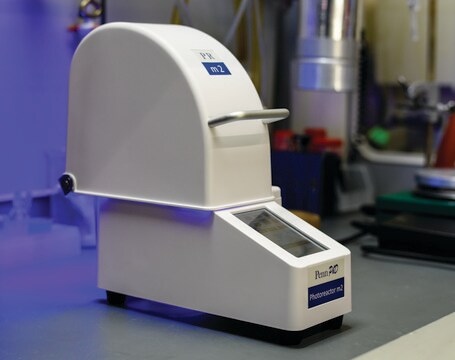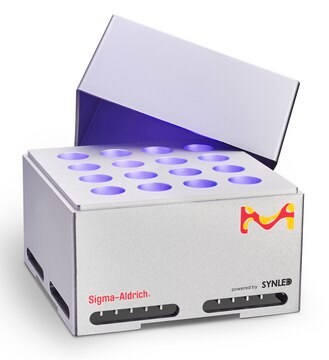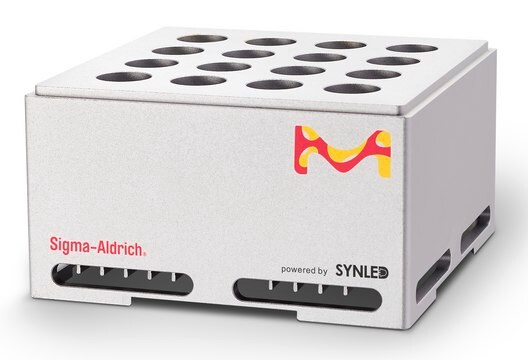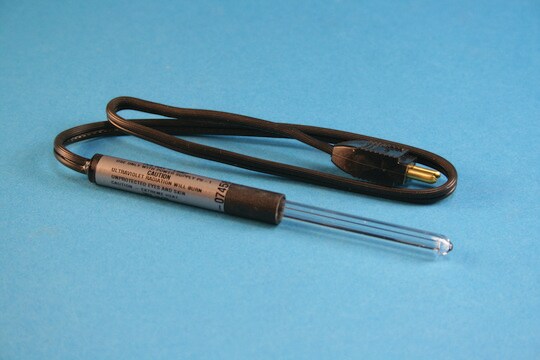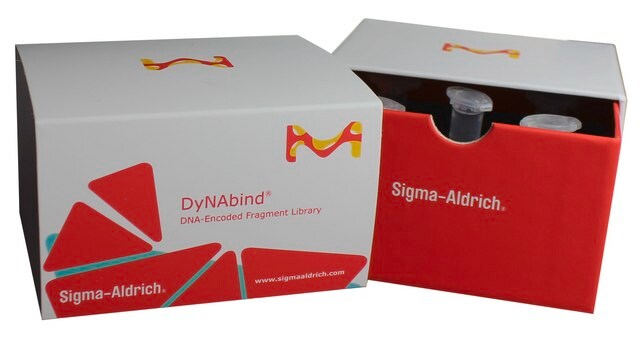Z744031
365nm Light Source
Synonim(y):
Penn PhD Photoreactor M2 light
About This Item
Polecane produkty
przydatność reakcji
reaction type: Photocatalysis
reagent type: catalyst
Opis ogólny
Features and Benefits of Penn PhD Photoreactor M2
- Modular design allows for use with a variety of wavelengths 365nm – 450nm
- 360 degree reflective environment maximizes surface area photon capture
- Light shield interlock prevents user exposure to harmful light rays
- Interactive touch screen controls reaction parameters
- Intertek ETL, CE, and CB approved
- User defined parameters including temperature, light intensity, fan speed and stirring
- Auto stop, pause and reset options
- Supports vial sizes gc, 4, 8, 20, 40 ml
- Temp feedback using a k-type thermocouple
Photocatalysis Technology Spotlight
produkt powiązany
Wybierz jedną z najnowszych wersji:
Certyfikaty analizy (CoA)
Przepraszamy, ale COA dla tego produktu nie jest aktualnie dostępny online.
Proszę o kontakt, jeśli potrzebna jest pomoc Obsługa Klienta
Masz już ten produkt?
Dokumenty związane z niedawno zakupionymi produktami zostały zamieszczone w Bibliotece dokumentów.
Klienci oglądali również te produkty
Produkty
Photoredox catalysis is a powerful synthetic methodology to form challenging covalent bonds using light irradiation. It is effective for light-driven polymer and small molecule synthesis.
Csp2- and Csp-hybridized coupling reactions are established catalytic approaches. However, multi-step Csp3- and Csp2-coupling reactions of boronic acids and related derivatives are still limited by ineffective two-electron transmetalation reactions.
Zastosowanie chemii rodnikowej w syntezie organicznej jest dobrze rozwinięte i szeroko zakrojone, choć często utrudnia je zależność od toksycznych inicjatorów rodnikowych.
While Markovnikov alkene reactivity is very well developed and utilized commonly in the synthesis of commodity and research chemicals, catalytic access to the anti-Markovnikov-selective adducts is a much less-developed endeavor.
Nasz zespół naukowców ma doświadczenie we wszystkich obszarach badań, w tym w naukach przyrodniczych, materiałoznawstwie, syntezie chemicznej, chromatografii, analityce i wielu innych dziedzinach.
Skontaktuj się z zespołem ds. pomocy technicznej